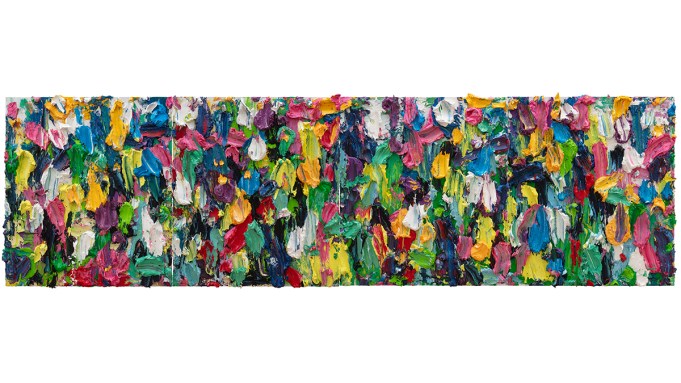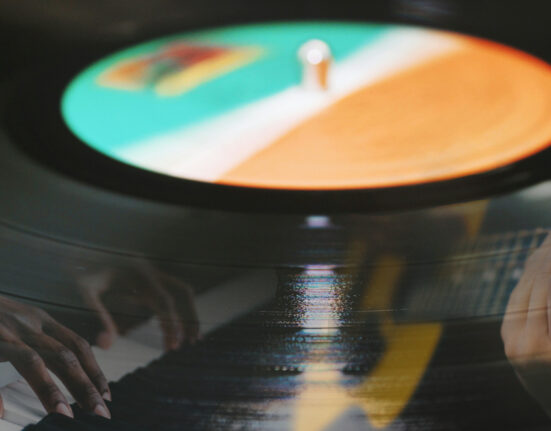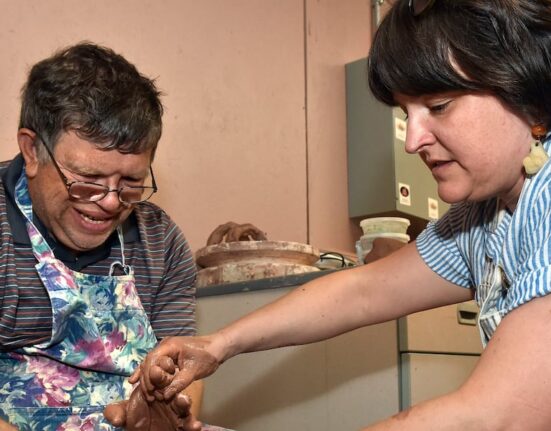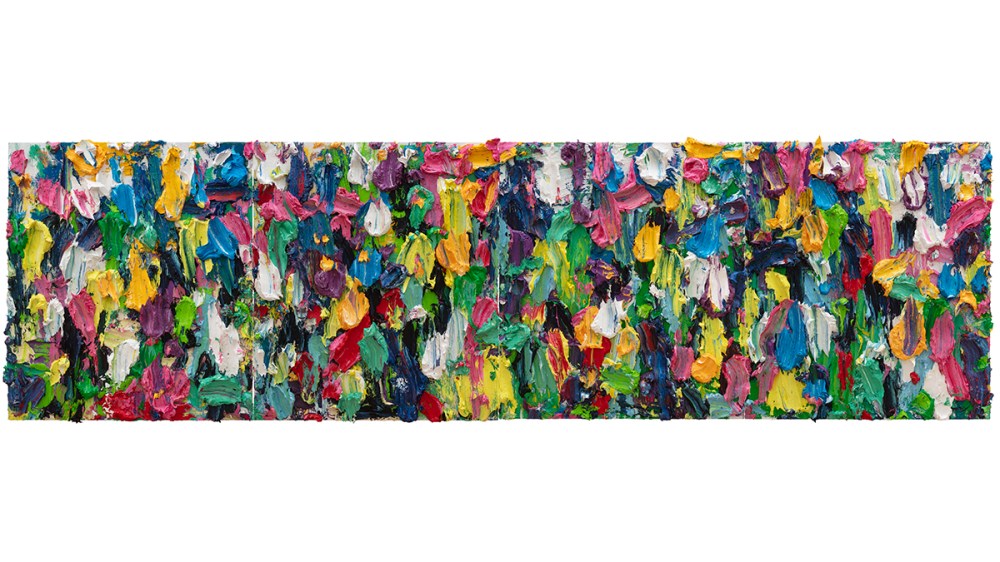
Courtesy of Tang Contemporary Art
Pictured above: Zhu Jinshi, Valley in the Mirror No. 1, 2022, oil on canvas
After several years of figurative painting’s domination of the contemporary-art scene, some of the freshest-looking canvases hanging in galleries and art fairs in recent months have been abstractions. Often encrusted in thick layers, many of these works are dense topographies weighing hundreds of pounds that push right up to the edge of sculpture. All revel in the nature of paint itself.
Boding well for its staying power, this new abstraction is emanating from the studios of artists young and old, male and female, in the U.S. and around the globe, so they don’t hew to one style: The happy-hippie vibes of Palm Springs–based Jim Isermann’s half-acrylic, half-rug-hooked flower couldn’t be more different from Cuban Diana Fonseca’s mournful collages of peeled housepaint or French Japanese artist Anne Kagioka Rigoulet’s sweeping, landscape-inspired panels that blend fabric collage and sgraffito, a classic mural technique of scraping away paint. But together they signal that collectors would be wise to clear some wall space.

Jim Isermann, Untitled (Flower Shag Painting), 2022, wool and acrylic paint on canvas over aluminum panel
Courtesy of the Artist and Miles Mcenery Gallery
Among the highlights at the Armory Show in New York, for instance, was the more than 18-foot-long, roughly 800-pound Valley in the Mirror No. 1 by Chinese master Zhu Jinshi, at Tang Contemporary Art, which has seven galleries across Asia. The monumental work resembles a Monet—if one tiny detail were magnified a zillion times, making each “dab” of paint suddenly massive enough to fill a shovel, which, not incidentally, Zhu has been known to use in his practice. He first experimented with swapping a brush for a broom in 1985 and five years later turned to masonry tools to heap on his oils, which look as thick as concrete (even if they never fully dry beneath the surface) and as brilliantly colored as Play-Doh. His most recent shake-up, in 2019: picking up a paintbrush again.
“The change of painting tools is a disruption to the art form,” Zhu says through a translator. “But art can only continue to evolve and thrive by such a form of disruption and destruction.”
Zhu, who spent many years in Germany before returning to his native China, currently finds inspiration in cosmology and quantum mechanics—“What’s important is the six-dimensional space beyond the limitations of pigments,” he declares—and dismisses categorization. Asked if he considers his sculptural, prismatic works pure abstraction, he replies, “Abstraction is a concept of modernism that is already outdated.”
Fonseca’s “Degradaciones” series appears abstract but is rooted in a lived experience that was all too real: walking through poor, decrepit neighborhoods in Havana, where “paint chips [were] falling as if the buildings were shedding their skin,” she says through a translator. Fonseca hit upon the idea of using these scraps “as if they were brushstrokes,” collaging them onto wood panels—literally painting with the remnants of the decaying city.
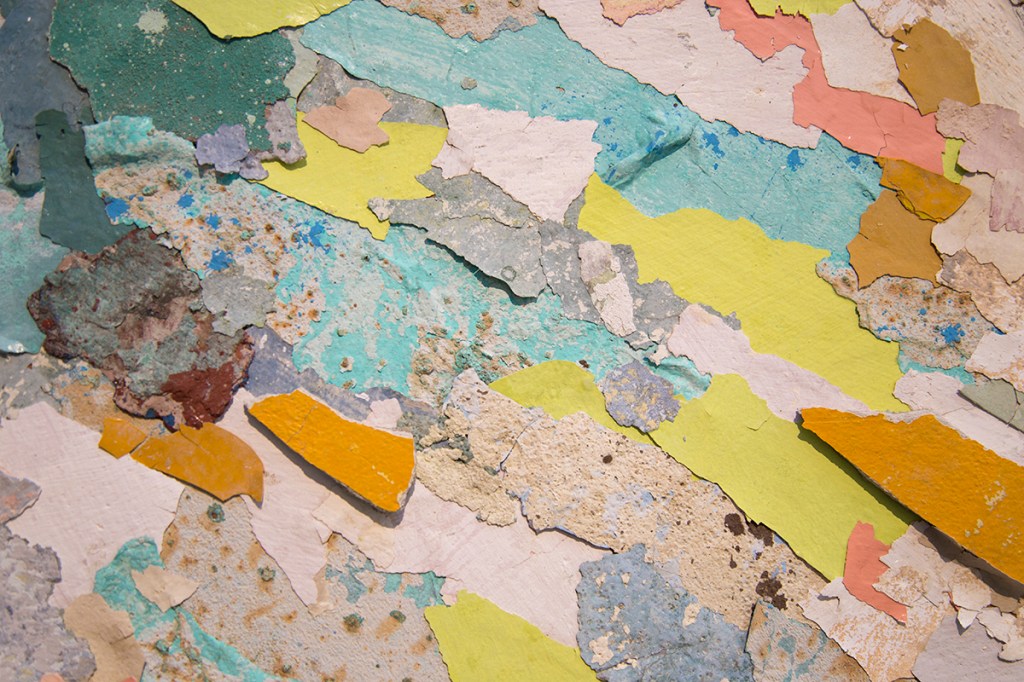
Diana Fonseca, Degradaciones I (detail), 2019, fragments of Havana facades collage on wood.
Courtesy of Galeria Max Estrella
“Deterioration is already part of the urban landscape of Havana, a reality beyond any metaphor and artistic vision,” explains Fonseca, who shows her work at Max Estrella in Madrid. “The intention is to construct something visually interesting and even attractive from what is broken, dirty, and destroyed and to find the beauty that resides in this chaotic reality.”
Fonseca composes the debris improvisationally: “I work sitting on the floor. It’s the best way I’ve found to assemble these collages as if they were a color puzzle.” The result is cascading scales of paint, some protruding and curling subtly from the panels, often in three or four tones. Fonseca cites influences ranging from Pollock’s gestural abstraction to Antoni Tàpies’s textured use of string, rags, and other nontraditional elements to van Gogh’s extraordinary color sense.
Gabriel Mills’s wood panels, meanwhile, are jam-packed with layer upon layer of paint in moodily juxtaposed hues. They can weigh up to 300 pounds and are, at least in part, about the labor, the process, and the materiality of the paint, which he varies in viscosity. “If I’m looking for something, it’s to continue to build a language for myself that feels adequate as a thinking space,” says Mills, who is represented by Micki Meng in San Francisco. He also paints representationally (his Air Jordans are one muse) and says he looks to everybody from Gerhard Richter to Richard Serra but notes his recent abstract paintings owe much to the alt-rock band the Smashing Pumpkins. Mills has even titled some, including Glass and the Ghost Children, after the band’s songs, which play in heavy rotation in his New Haven, Conn., studio. “That song feels like an introspective dialogue,” he says.
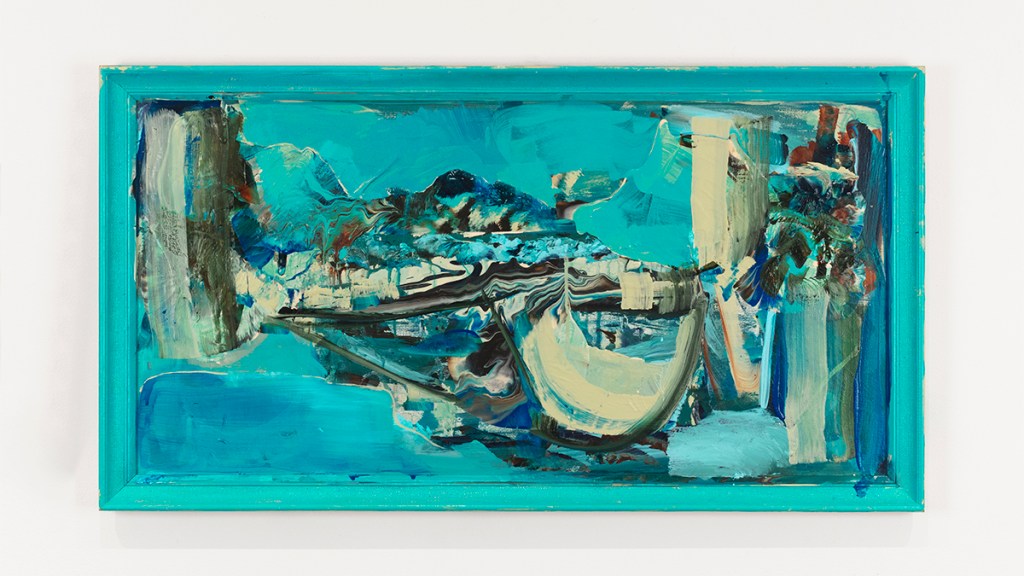
Katy Moran, Lake Garda, feel harder, 2023, acrylic on found painting
Courtesy of Sperone Gallery
British artist Katy Moran’s reliance on art history is more tangible than that of her peers: She typically scavenges old paintings from thrift shops, then pours acrylics over them, letting the pigments pool and drip over the underlying image. For the canvases in her recent show at Sperone Westwater in New York, she employed her own physique as a tool as well. “The body painting injects an element of accident and chance, which I value the energy of,” Moran explains. “I also like the specific marbling paint effect it gives, this visceral quality.”
So just which part of her anatomy serves as her brush? “My bum!”

